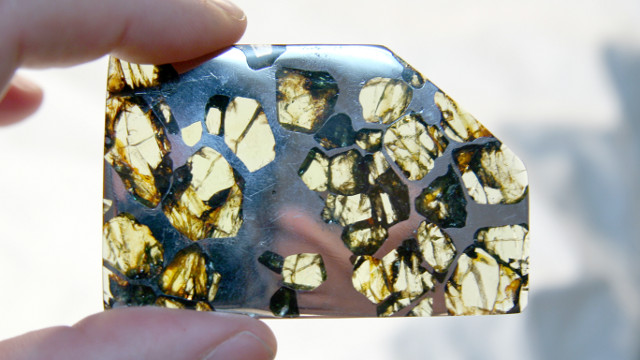Meteorites can be separated into four main groups:
Chondrites are grainy stony meteorites composed mainly of silicate minerals like olivine and pyroxene. They make up about 80% of the meteorites found on Earth.
Achrondrites are similar to chondrites, but at some point in their lifetime they have been melted (like magma) and therefore they do not demonstrate the same graininess that chondrites do.
Iron meteorites are composed mainly of meteoric iron. Despite its name meteoric iron is actually an iron-nickel alloy, and most iron meteorites are composed of either kamacite or taenite.
The fourth and final group are the siderolites, stony-iron meteorites, and they are beautiful. I am particularly keen on pallasites, which contain centimetre-sized grains of peridot olivine embedded within a matrix of meteoric iron.

The origin of pallasites is uncertain, but it’s thought possible that they may be formed when two asteroids collide, or when a meteorite collides with the surface of a planet.

